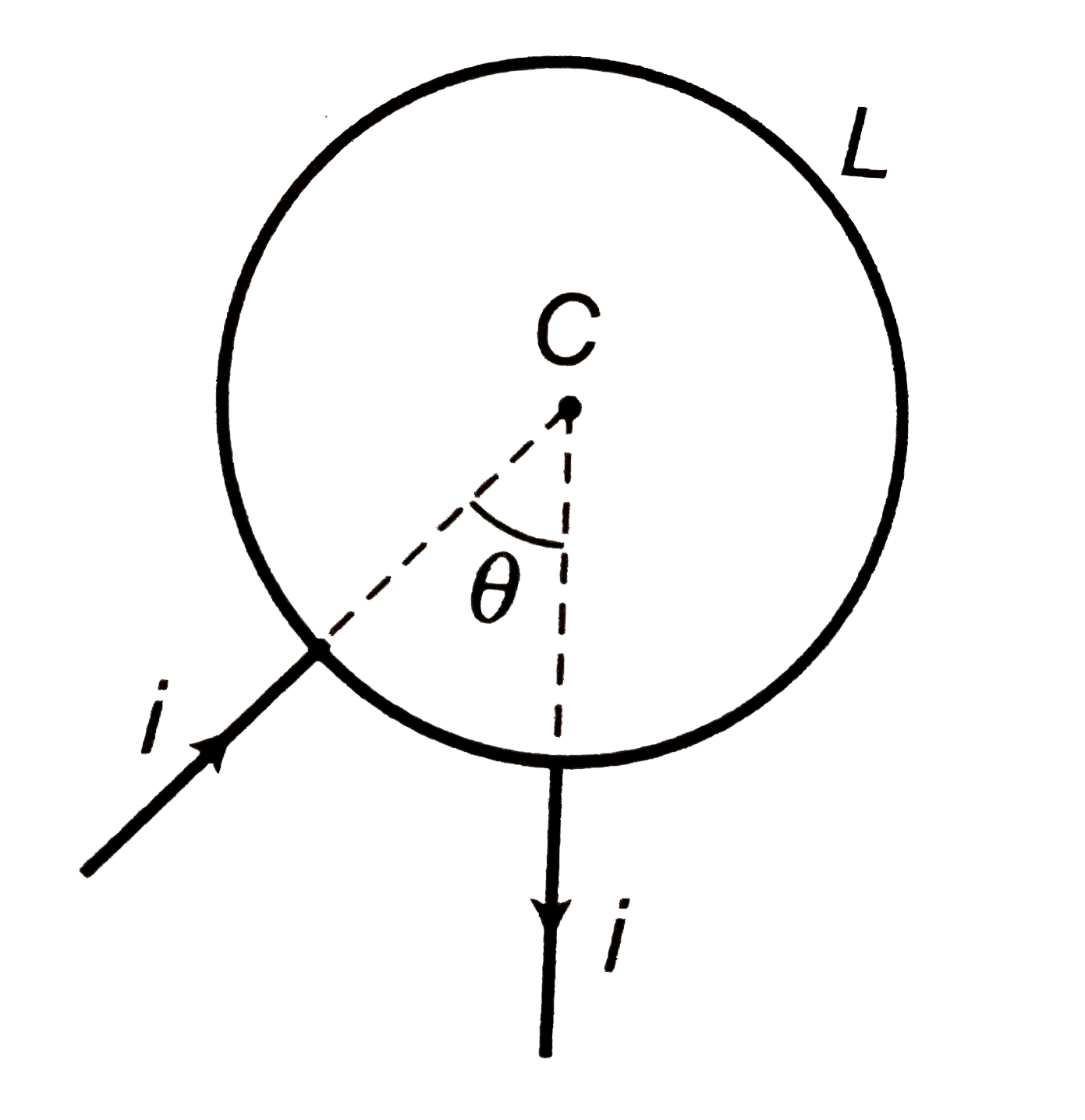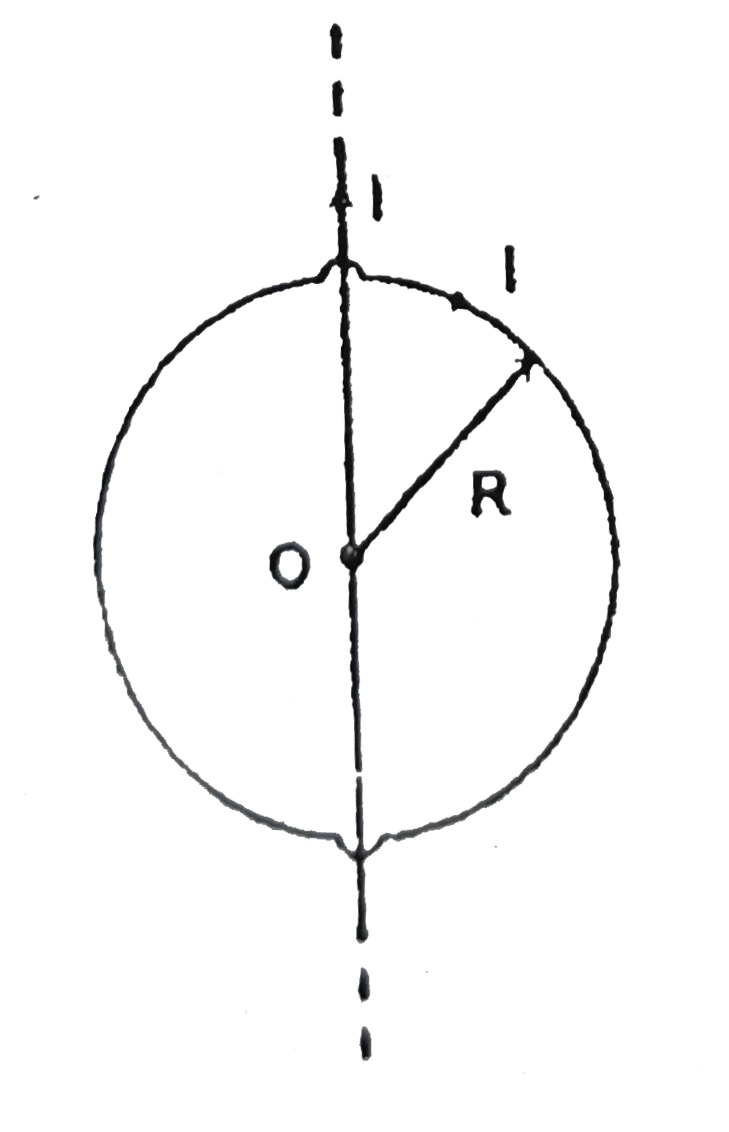L is a circular ring made of a uniform wire, currents enters and leaves the ring through straight conductors which, if produces, would have passed through the centre C of ring. The magnetic field at C

(i) due to the straight conductors is zero
(ii) due to the loop is zero
(iii) due to the loop is proportional to θ
(iv) due to loop is proportional to (π−θ)
due to the straight conductors is zero
due to the loop is zero
due to path II is proportional to θ.
due to the path I is proportional (π−θ)
The correct Answer is:B
Step by step video, text & image solution for L is a circular ring made of a uniform wire, currents enters and leaves the ring through straight conductors which, if produces, would have passed through the centre C of ring. The magnetic field at C (i) due to the straight conductors is zero (ii) due to the loop is zero (iii) due to the loop is proportional to theta (iv) due to loop is proportional to (pi-theta) by Physics experts to help you in doubts & scoring excellent marks in Class 12 exams.
Updated on:21/07/2023Topper's Solved these Questions
- SOURCES OF MAGNETIC FIELDBook:CENGAGE PHYSICSChapter:SOURCES OF MAGNETIC FIELDExercise:single correct Ansewer type
Explore 12 Videos
- SOURCES OF MAGNETIC FIELDBook:CENGAGE PHYSICSChapter:SOURCES OF MAGNETIC FIELDExercise:Subjective type
Explore 11 Videos
- SEMICONDUCTOR ELECTRONIC : MATERIALS, DEVICES AND SIMPLE CIRCUITSBook:CENGAGE PHYSICSChapter:SEMICONDUCTOR ELECTRONIC : MATERIALS, DEVICES AND SIMPLE CIRCUITSExercise:QUESTION BANK
Explore 12 Videos
- THERMAL PROPERTIES OF MATTERBook:CENGAGE PHYSICSChapter:THERMAL PROPERTIES OF MATTERExercise:Question Bank
Explore 40 Videos
Similar Questions
Knowledge Check
ABCD is a square loop made of a uniform conducting wire. A current enters the loop at A and leaves at D. The magnetic field is
 Azero only at the centre of the loopBmaximum at the centre of the loopCzero at all point outside the centre loopDzero at all points inside the loop
Azero only at the centre of the loopBmaximum at the centre of the loopCzero at all point outside the centre loopDzero at all points inside the loopA circular conducting loop of radius R carries a current I. Another straight infinite conductor carrying current I passes through the diameter of this loop as shown in the figure. The magnitude of force exerted by the straight conductor on the loop is
 Aπμ0I2Bμ0I2Cμ0I22πDμ0I2π
Aπμ0I2Bμ0I2Cμ0I22πDμ0I2π
What is the shape of magnetic field lines due to a straight current - carrying conductor ?
View SolutionWhat is the form of magnetic field lines due to a straight current-carrying conductor?
View SolutionWhat is the form of magnetic field lines due to a straight current-carrying conductor?
View SolutionIllustrate the magnetic field produced due to a straight current carrying conductor.
View SolutionThe direction of magnetic field lines due to straight conductor carrying current is given by……………….. .
View SolutionDescribe the magnetic field due to current through a circular loop.
View Solution

